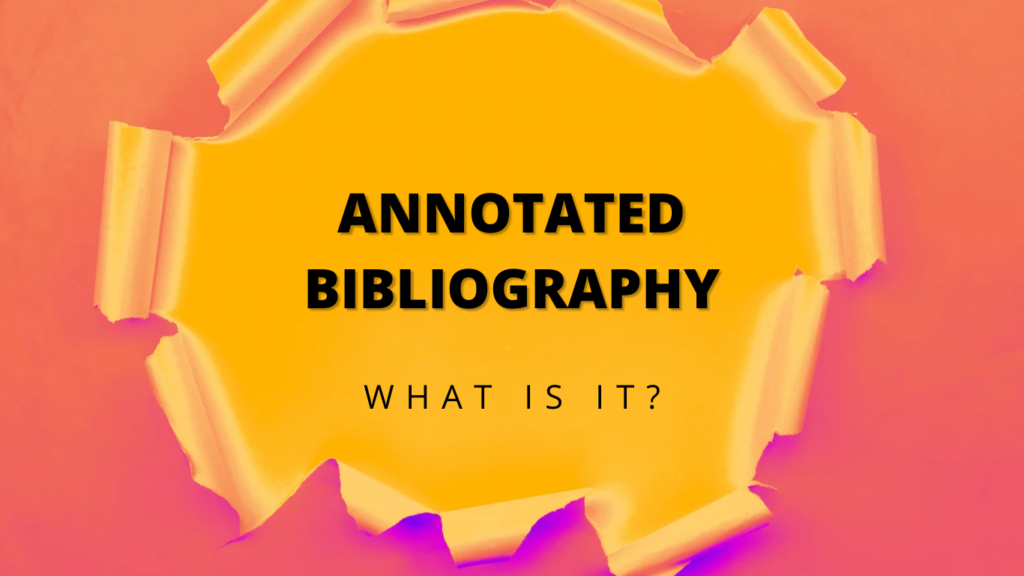On the morning of my initial encounter with my PhD mentors, Dr. Mercy Ette and Prof. Cornel Sadvoss, both affiliated with the University of Huddersfield in the United Kingdom, I entered their office with a sense of novelty, having arrived from Nigeria. To my surprise, they immediately presented me with my first assignment: creating an Annotated Bibliography for my research. At that moment, I was taken aback, wondering, “What exactly does that entail?”
With the expert help of my supervisors, I was able to by the next meeting produce a rich and well-documented annotated bibliography and in time, was able to add to my initial selection of resources.
I have provided here a guide on what an annotated bibliography is and how to write one. As a special bonus, I have included a sample – the annotated bibliography for my PhD research at Huddersfield. As you’ll see on the document, my proposed title appears as a running head all through the 22-page document!
Although my PhD days are over, I have continued the practice of developing first, an annotated bibliography before I begin any research project and I have found the routine really rewarding. Today, developing and updating an annotated bibliography is a core requirement for all postgraduate students under my supervision.
What is an Annotated Bibliography?
An annotated bibliography comprises a compilation of references to books, articles, and documents, accompanied by concise and evaluative paragraphs called annotations. Typically around 150 words in length, these annotations aim to provide the reader with information regarding the pertinence, precision, and calibre of the cited sources.
Whereas Abstracts are summaries found at the beginning of academic articles, Annotated Bibliographies are both descriptive and critical of the author’s argument, perspective, methodology/methods, etc.
Why Write an Annotated Bibliography?
Research Evaluation: An annotated bibliography allows you to critically assess the relevance, accuracy, and quality of the sources you cite. By providing brief descriptive and evaluative paragraphs for each source, you can determine their credibility and suitability for your research.
Identify Research Gaps: An annotated bibliography is critical to identifying gaps in the literature which is an important requirement for any research project. A researcher needs to know what has been done in order to significantly contribute to knowledge.
Demonstrating Knowledge: An annotated bibliography showcases your understanding of the existing literature on a particular topic. It highlights your ability to identify critical sources, summarise their content, and evaluate their significance within the context of your research.
Efficient Organisation: By compiling a list of citations with annotations, an annotated bibliography helps you organise and keep track of the sources you have explored. It serves as a handy reference tool, ensuring that you can easily locate and revisit relevant materials later on.
Guidance for Future Work: An annotated bibliography can serve as a roadmap for future researchers or even yourself. The annotations provide insights into each source’s strengths, weaknesses, and overall value, assisting others in understanding the scholarly landscape and potentially guiding their own investigations.
Academic Integrity: Including an annotated bibliography in your work demonstrates your commitment to academic integrity. It shows that you have conducted thorough research, considered various perspectives, and acknowledged the contributions of other scholars.
How to Write an Annotated Bibliography?
The first step is to understand your research problem and then locate the appropriate spaces to extract the literature you need. Acceptable academic literature sources include:
- Peer-reviewed journal articles
- Academic books (Edited)
- Professional Journals
- Government and Professional Association Websites
The second step is to cite the resource using the style recommended by your School, Faculty, or Department.
Lastly, write concise notes (annotation) summarising the main theme of the literature. Add sentences that
- Assessing the author’s authority or background
- Evaluate the work by comparing and contrasting it with other sources
- Detail how the work is relevant to your research problem

